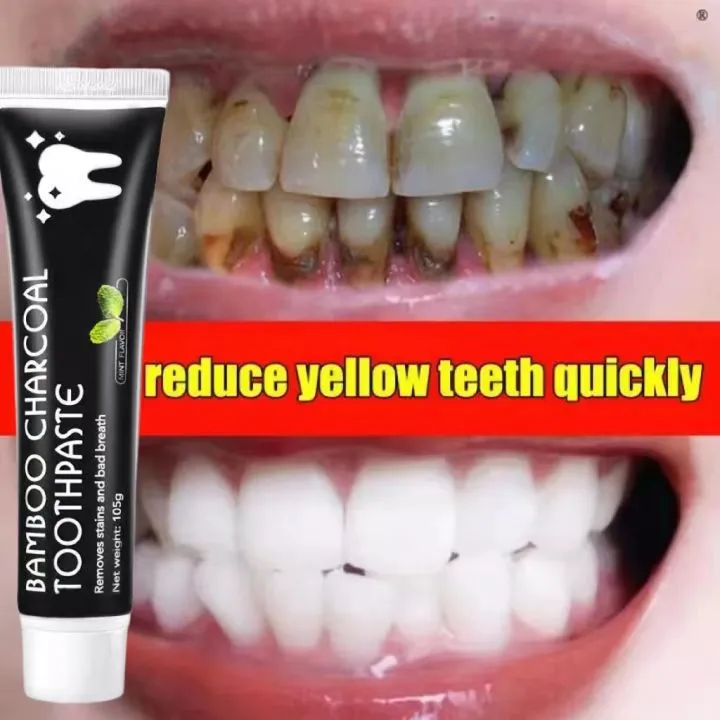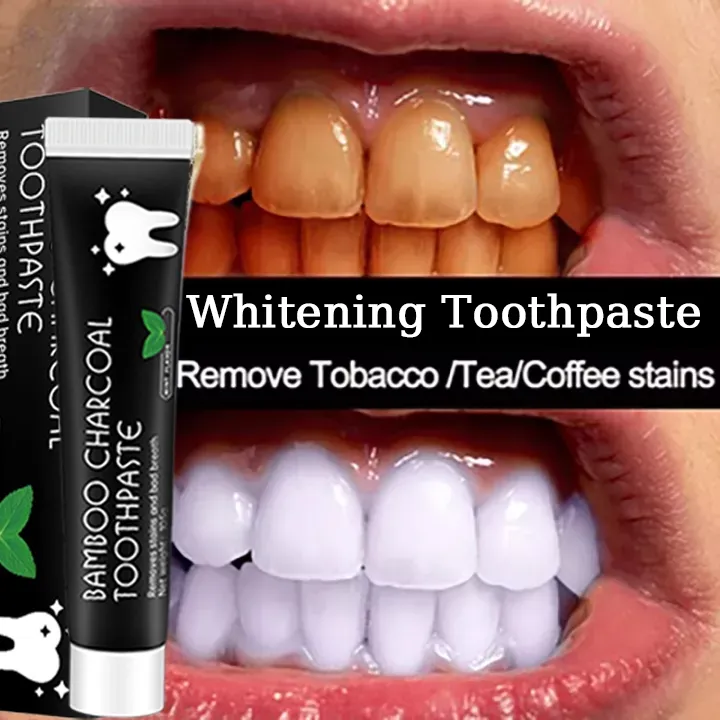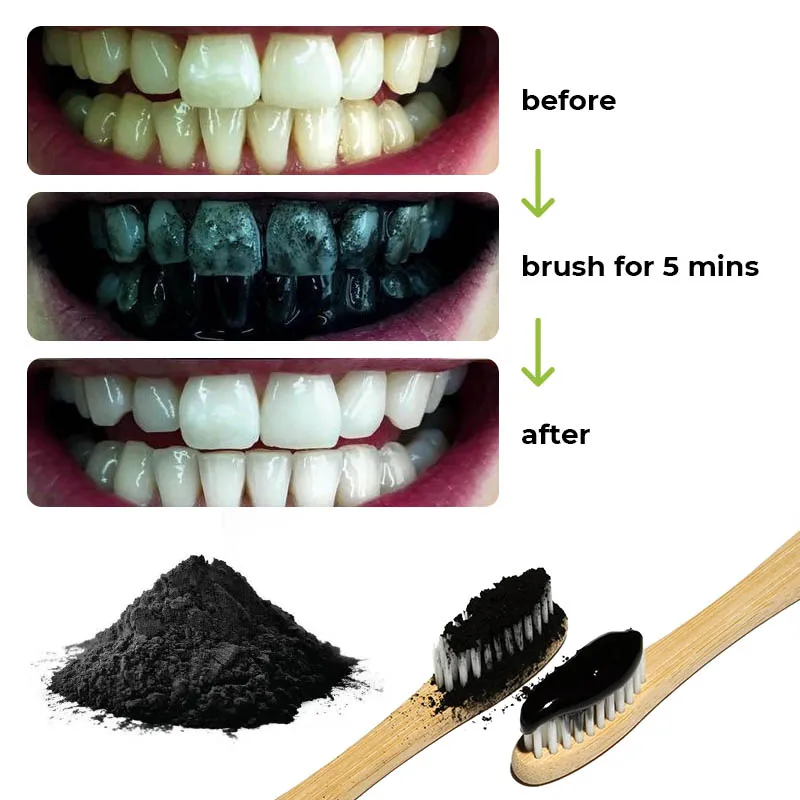What is Bamboo Whitening
Bamboo whitening is a natural approach to achieving a brighter, healthier smile, gaining significant popularity as an alternative to conventional teeth whitening methods. Unlike harsh chemical treatments, bamboo-based products utilize the natural properties of bamboo to gently remove stains and discoloration from the teeth. The core concept revolves around the use of activated charcoal derived from bamboo, which acts as a mild abrasive to lift surface stains, such as those caused by coffee, tea, and tobacco. Bamboo whitening is celebrated for its gentleness, making it a suitable option for individuals with sensitive teeth or those seeking a more holistic approach to oral care. The use of bamboo also aligns with the growing consumer preference for sustainable and environmentally friendly products, contributing to its increasing appeal in the market. Many people are looking for safe and effective ways to enhance their smiles, and bamboo whitening offers a promising solution by combining the effectiveness of stain removal with the benefits of natural ingredients.
How Bamboo Whitening Works
The efficacy of bamboo whitening stems from the unique properties of activated charcoal derived from bamboo. This activated charcoal is created through a process that involves heating bamboo at high temperatures, which alters its structure to create a porous surface. These pores have a high surface area, enabling them to absorb impurities, including the stains and discoloration that dull the appearance of teeth. When used in a toothpaste or powder form, the activated charcoal gently polishes the teeth, effectively removing surface stains without eroding the enamel. Furthermore, bamboo contains natural antibacterial properties that can help reduce bacteria in the mouth, contributing to overall oral health. This dual action—stain removal and bacterial reduction—makes bamboo whitening a well-rounded approach to achieving a brighter, healthier smile. The gentle nature of the charcoal means it is less likely to cause sensitivity, making it a preferred choice for many individuals.
The Science Behind Bamboo

The science behind the effectiveness of bamboo whitening is rooted in the unique properties of activated charcoal, particularly its high surface area and absorption capabilities. When bamboo is subjected to high-temperature activation processes, its internal structure transforms, resulting in a highly porous material. This porous structure significantly increases the surface area of the charcoal, creating numerous sites for the absorption of stain molecules and impurities. These impurities are then effectively lifted away from the teeth’s surface during brushing. Scientific studies support the ability of activated charcoal to adsorb various substances, including tannins and chromogens, which are common culprits behind teeth discoloration. Unlike chemical bleaching agents, bamboo whitening relies on a physical process of adsorption, making it a gentle yet effective method. The effectiveness of bamboo whitening depends not only on the charcoal quality, but also on consistency of use, making it a great option in the pursuit of a radiant smile.
The Benefits of Bamboo Whitening
Bamboo whitening offers a range of benefits that extend beyond just achieving a brighter smile. This method provides a natural alternative to chemical-based whitening treatments, appealing to individuals seeking a more holistic approach to oral care. The gentle nature of bamboo whitening makes it suitable for those with sensitive teeth, reducing the likelihood of experiencing discomfort or increased sensitivity often associated with harsher treatments. Moreover, many bamboo whitening products are formulated with natural ingredients, which can contribute to overall oral health by avoiding potentially harmful chemicals. In addition to cosmetic benefits, bamboo whitening can also contribute to fresher breath and a healthier mouth environment by reducing bacteria. These benefits make bamboo whitening a comprehensive choice for those looking to improve their smile while prioritizing their overall well-being. It is a great way to not only improve your smile but also contribute to better oral health by using natural ingredients.
Gentle on Enamel
One of the most significant advantages of bamboo whitening is its gentle approach to teeth whitening, which is particularly beneficial for those with sensitive teeth or concerns about enamel erosion. Unlike some conventional whitening treatments that use harsh chemicals, bamboo whitening typically employs activated charcoal, which is a mild abrasive. This means it effectively removes surface stains without damaging the enamel, preserving the natural structure of your teeth. The gentle nature of bamboo whitening makes it a safer option for long-term use, reducing the risk of enamel thinning, increased sensitivity, or other side effects associated with stronger treatments. The mild abrasiveness of bamboo charcoal helps to polish the teeth, removing stains without causing harm, and contributing to overall oral health. By choosing bamboo whitening, individuals can achieve a brighter smile while maintaining the integrity of their enamel, ensuring a healthier and more sustainable approach to teeth whitening.
Natural Ingredients

Bamboo whitening products frequently prioritize the use of natural ingredients, setting them apart from many conventional teeth whitening options. This emphasis on natural components aligns with the growing consumer preference for products free from harsh chemicals, additives, and artificial ingredients. The primary active ingredient, activated bamboo charcoal, is derived from sustainably sourced bamboo and is known for its gentle stain-removing properties. In addition to charcoal, these products may incorporate other natural ingredients like essential oils, such as peppermint or tea tree, for their antibacterial and breath-freshening qualities. The use of natural ingredients often appeals to those who are concerned about the potential health impacts of chemical-laden products. By choosing bamboo whitening products, individuals can be confident that they are using a more natural and potentially healthier approach to achieving a brighter smile while also contributing to a reduced environmental footprint.
How to Use Bamboo Whitening Products
Incorporating bamboo whitening products into your daily oral hygiene routine is relatively simple and can be easily integrated with existing habits. The most common form of bamboo whitening is activated charcoal toothpaste, which is used in the same way as regular toothpaste. Brush your teeth thoroughly for two minutes, ensuring that all surfaces are covered, and then rinse your mouth with water. Some people also use a bamboo whitening powder, which can be applied to a wet toothbrush before brushing. With powder, it’s important to avoid excessive pressure to prevent potential abrasion. After brushing, rinse your mouth well with water. It is also a great practice to follow up with a mouthwash. The key to achieving the best results with bamboo whitening is consistency. Use the product as directed, usually twice daily, and be patient. It can take some time to see noticeable results, but with regular use, you should gradually see a brighter and whiter smile.
Selecting the Right Product
Choosing the right bamboo whitening product involves considering several factors to ensure it aligns with your needs and preferences. Start by examining the ingredients list, looking for products that feature high-quality activated bamboo charcoal and other natural components. Avoid products with excessive additives, artificial flavors, or harsh chemicals. Also, consider the form of the product. Toothpaste is the most common and convenient option, while powders can offer a different experience but may require more care during application. Read reviews and check customer ratings to gauge the product’s effectiveness and user satisfaction. If you have specific oral health concerns, such as sensitive teeth or gum issues, look for products specifically formulated for these conditions. Ultimately, the best bamboo whitening product is the one that you find easy to use, effective, and comfortable, while aligning with your values regarding natural ingredients and sustainability. Choosing the right product can make a difference in your teeth whitening journey.
Proper Brushing Technique

Adopting the correct brushing technique is crucial for maximizing the effectiveness of bamboo whitening products and maintaining overall oral health. Use a soft-bristled toothbrush to avoid any potential abrasion of the enamel. Apply a small amount of bamboo whitening toothpaste or dip your wet toothbrush into the powder. Gently brush your teeth using a circular motion, ensuring that you cover all surfaces: the front, back, and chewing surfaces of each tooth. Pay close attention to the gum line, where stains often accumulate. Brush for a full two minutes, which allows sufficient time for the activated charcoal to lift surface stains. Avoid brushing too vigorously, as excessive pressure can wear down the enamel or irritate the gums. Once you’re finished, rinse your mouth thoroughly with water to remove any remaining charcoal particles. Proper brushing technique is just as important as the product used, and contributes to better results.
Maintaining Your White Smile
Maintaining a white smile after using bamboo whitening products requires a proactive approach that combines consistent oral hygiene practices and mindful lifestyle choices. Continue brushing your teeth twice daily with a bamboo whitening toothpaste or using a bamboo charcoal powder. Floss daily to remove plaque and food particles from between your teeth, and consider using a mouthwash. Make sure to avoid foods and drinks that are known to stain teeth, such as coffee, tea, red wine, and dark-colored berries. If you consume these items, rinse your mouth with water or brush your teeth soon after. Regular dental checkups and cleanings are essential to remove any surface stains and to maintain the overall health of your teeth and gums. Additionally, avoid smoking and other tobacco products, as these can severely stain your teeth. By adopting these habits, you can keep your smile bright and maintain the results of your bamboo whitening efforts for a long time.
Dietary Considerations
Dietary choices play a significant role in maintaining the results of bamboo whitening and keeping your smile bright. Certain foods and beverages can stain teeth and counteract the whitening effects of bamboo charcoal. Minimize your consumption of coffee, tea, red wine, and dark-colored sodas, as these drinks contain pigments that easily adhere to tooth enamel. Limit your intake of highly pigmented fruits, such as blueberries, blackberries, and cherries, as they can also contribute to staining. Incorporate a diet rich in teeth-friendly foods, such as crunchy fruits and vegetables, like apples and carrots, which can help to naturally clean your teeth and stimulate saliva production, which helps to wash away stains. Drink plenty of water throughout the day, which helps keep your mouth hydrated and washes away food particles and stains. Making mindful dietary choices can extend the benefits of bamboo whitening and contribute to a healthier, more vibrant smile.
Regular Dental Checkups

Regular dental checkups and professional cleanings are indispensable for maintaining the results of bamboo whitening and ensuring optimal oral health. Even with diligent home care, there may be areas that are difficult to reach or that accumulate plaque and tartar over time. During a dental checkup, your dentist will examine your teeth and gums, detecting any signs of decay, gum disease, or other dental problems. Professional cleanings involve the removal of plaque and tartar, and polishing the teeth to remove any remaining surface stains. These cleanings can help to enhance the effects of bamboo whitening and keep your teeth looking their best. Additionally, your dentist can provide personalized advice on maintaining your oral hygiene routine and offer guidance on any specific concerns or issues you may have. Schedule dental checkups every six months, or as recommended by your dentist, to keep your smile healthy and bright.
